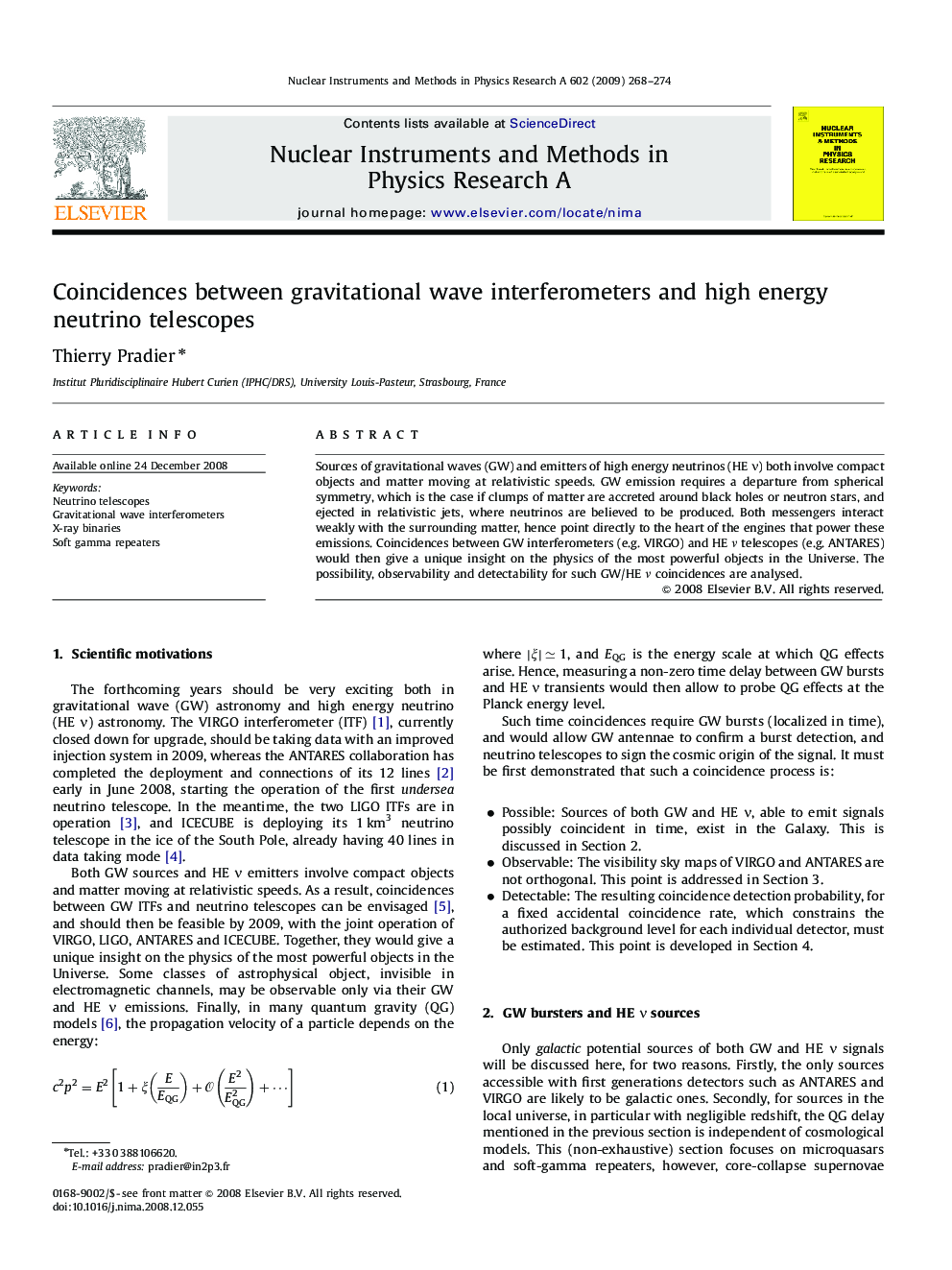| Article ID | Journal | Published Year | Pages | File Type |
|---|---|---|---|---|
| 1828706 | Nuclear Instruments and Methods in Physics Research Section A: Accelerators, Spectrometers, Detectors and Associated Equipment | 2009 | 7 Pages |
Sources of gravitational waves (GW) and emitters of high energy neutrinos (HE νν) both involve compact objects and matter moving at relativistic speeds. GW emission requires a departure from spherical symmetry, which is the case if clumps of matter are accreted around black holes or neutron stars, and ejected in relativistic jets, where neutrinos are believed to be produced. Both messengers interact weakly with the surrounding matter, hence point directly to the heart of the engines that power these emissions. Coincidences between GW interferometers (e.g. VIRGO) and HE νν telescopes (e.g. ANTARES) would then give a unique insight on the physics of the most powerful objects in the Universe. The possibility, observability and detectability for such GW/HE νν coincidences are analysed.
